
I had a rather interesting conversation with one of my confidential sources concerning Doc Savage, UFOs, and experimental aircraft in the 1950s. I thought it might be of interest to some of my readers.
The Advisory Group for Aerospace Research and Development (AGARD) was formed in 1952 and was intended to act as experiment in scientific cooperation among NATO nations. In 1953, an international AGARD scientific conference was held in Cambridge, Massachusetts to discuss the direction of future aviation developments in the light of the experiences of the Korean War. Attending the conference were two men who would have an important impact on top secret experimental aviation in the 1950s.
The first was Professor Rudolph Felix Popkiss (b. 30th October 1902, Budapest, Hungary). Popkiss was of German-speaking Swiss lineage. His father had been studying in Budapest at the time of his son's birth. His parents moved to Appenzell near the Austro-Swiss border when he was only a year old; it was there that his sister Heidi was born. In his youth he helped out a clockmaker by the name of Curt Gestler who taught him about delicate machinery.

Rudolph completed his doctoral studies at the University of Geneva in 1931 with degrees in Electronics, Aviation, and Rocketry and set up his own research complex outside Geneva. He was eventually named a full professor at the University in 1935.
 Robert Goddard at Roswell, NM with one of his rockets.
Robert Goddard at Roswell, NM with one of his rockets.Back in 1929, he had traveled to America to visit with Robert H. Goddard at his rocket laboratory in Massachusetts. The two became friends and they continued to correspond with each other during the 1930s. Popkiss came to visit his friend many times over the next 8 years and fell in love with the USA. There was very little work available in Switzerland for experimental aviation and Prof. Popkiss began receiving funding from the German Government in 1934 to continue his research. By 1936, the Germans were insistent that Popkiss come to Germany to work on rocketry and advanced aviation design. Popkiss was horrified at what the Nazis were doing in Germany and he refused. His major source of funding was summarily cut off and he was forced to close his research facility. By this time Dr. Goddard had moved his experimental operations to Roswell, NM and Prof. Popkiss took a liking to the American Southwest on his visits there. Meanwhile, his fellow German-speaking Swiss academics began to ostracize him for his refusal to work in Nazi Germany.

In 1937, he was offered a position as visiting professor at the Massachusetts Institute of Technology (MIT) and he came to the United States. While he was here, Popkiss was approached by the US Government to do some consulting work. He agreed to do so. Among other things he was able to brief them on what German scientists were doing. They granted him a plot of land in Black Rock, Nevada to set up a laboratory for experimental work in rocketry and advanced aircraft engine design. When his visiting professorship at MIT was over, he was offered a special status green card and was employed by the US Government full time in experimental aircraft design. He helped develop the first fully workable jet engine for US military aircraft which was used in the XP-59A Airacomet on its maiden flight on October 1st, 1942. His rocket engine design was the basis for the XLR-11 rocket engine used in the Bell X-1 aircraft in 1946 to break the sound barrier. He also drafted the first proposal for a swept-back winged jet fighter which was the inspiration for the F-86 Sabre jet. He was offered a position on the aviation research team for the Manhattan Project but refused. He wanted to pursue continued advances in jet engine design.
After the war in 1945, Professor Popkiss returned to MIT as a full professor and he brought his sister Heidi to the United States. Their parents had both died during the war years and Rudolph deeply regretted that, for security reasons, he could not attend their death beds in Switzerland. In 1946, he became an American citizen. The Professor is a workaholic but he collects butterflies and tinkers with clocks and 'likes nothing better than to sit in front of a roaring fire with a good book'. He is a great reader of classical literature in several languages. But his greatest love is cooking, especially breakfast.
Professor Popkiss was the keynote speaker at the 1953 AGARD Conference and challenged his colleagues to "look to the future" and to push the envelope in developing revolutionary new power trains and aircraft designs. He got into a heated discussion with some British academics after the talk which continued on into the night. One of those academics was Doctor Horatio Beaker.
 St. Edmund Hall, Oxford
St. Edmund Hall, OxfordDr. Beaker was an interesting fellow. He was born on 23rd July 1912, in Tunbridge Wells, England. Horatio was a child prodigy and received straight A levels in every subject. He was a bit eccentric and absent-minded but absolutely brilliant. He attended Oxford as an Undergraduate and even coxed for the Boat Race. Horatio was a scholar at one of the oldest Oxford colleges, St. Edmund Hall, where he got a double-first in Maths and Physics (Part I) and Biology with Micro-Genetics (Part II.) He took further training at Cambridge where he did some student teaching. Ultimately he completed degrees in Electronics, Biology, Physics, Mathematics, and Aerospace Engineering. He gained his Oxford D.Sc in 1941, and was elected a Fellow of All Souls after the war in 1946, at the age of 34. He also was an student of Judo and was a founding member of the Oxford Judo Club.

He worked for Vickers Aviation for a while before the war and became known in the research community of the Air Ministry. His brilliance and revolutionary ideas made him a critical military asset and his identity was kept confidential. He was given a cover job in London to put foreign intelligence services off the track.
During World War II , Dr. Beaker OFFICIALLY worked for the Ministry of Food with Professor Magnus Pyke, educating the people in how to get the most nutrition from what food was available. In fact, Horatio wrote several pamphlets on the topic of enhancing the diet with plants and herbs from the garden including a particularly interesting one extolling the use of Rose Hips as a source of Vitamin C. His recipe for Rose Hip tea flavored with Hibiscus became a staple product of the Crabtree & Evelyn brand and is still in production today. Beaker is also, like Popkiss, dedicated to his work but he devotes a lot of his scarce leisure time to botany where he is still experimenting today with food plants to enable us to get more nutrition out of them and he also puts his fertile mind into trying to get plants to grow in inhospitable areas.

For most of the war, though, he worked for the Air Ministry spending a lot ot ime at the Royal Aircraft Establishment (RAE) in Farnborough, HANTS. He worked with Dr. Sir Barnes Neville Wallis with whom he had been associated at Vickers before the war.

They had collaborated on the design of the development of the Wellesley and Wellington bombers and of the use of Geodesic structures in airframes. During the war, theyworked on top secret aviation projects including the development of the bouncing "Dam Buster" bombs and the 12,000 pound Grand Slam bombs. The work Beaker did was highly classified and he often used the cover of "plant growth research" to conceal his involvement is secret Aerospace work.

In 1945, he took a teaching position at Cambridge. He also pursued several aviation research projects both under private and government contracts. He maintained his top secret clearance and was part of the British delegation to the AGARD conference in 1953. Officially he went to the US to study the growth of desert plants. In reality, he spent his time at the AGARD conference, the experiment flight section at Edwards AFB, and Prof. Popkiss's site at Black Rock.
In the heated discussions that night in 1953, Popkiss and Beaker found themselves on common ground for many issues and soon the discussion ended up as a dialog between these two men that occurred on such a high level of discourse that many of their colleagues could not follow what they were saying. The discussion wandered into the realm of extremely advanced theoretical engine systems and complex airframe designs. Beaker in his early twenties had proposed a design for what he called "The Manta", a hybrid fighter aircraft that could not only fly but also function as a submarine attack craft. He also had designs for a flying aircraft carrier and a rocket pack ejection system for both underwater and aviation ejection.* The problem was that these projects required special materials and power sources that were unavailable at that time.
{*In an alternate timeline, these projects became a reality and Great Britain fielded them in 1935. This can be seen in the film "Sky Captain and the World of Tomorrow" which takes place in an alternate 1939 where Germany and Japan have been held in check by British air power.}
He also had an idea for an advanced sort of imaging system that could penetrate a visual obstacle -- the thickest fog, liquid water, even solid walls -- and present clear real time full color images of objects at a distance. This "Clear Vue" system was based on the Quantum Physics principle of the Josephson effect. This effect induced quantum tunnelling through any barrier by increasing the potential in the quantum state vector on one side of the barrier thus allowing energy and information to burrow through it. The actual image transmission occurs at tachyonic speed. Beaker was aware that this nascent technology could theoretically lead to teleportation. (He did not know that this had been the principle used by the teleportation machine in the Super Saga "The Vanisher".)
Popkiss shared his plans for a vehicle that used a magnetoaerodynamic system. It would use magnetic fields to suck air into a plenum chamber and then magnetically force the molecules to repel each other and cause direct expansion and expulsion of the gases by magnetic induction. Add some combustable fuel to the mixture and you would have a powerful engine capable of propelling an aircraft at hypersonic speeds. The theoretical limit of the top speed of an aircraft powered by such an engine could be over Mach 30. That would be fast enough to put an aircraft into orbit with very little on-board fuel using mostly air for reaction mass at higher speeds and altitudes.
Sitting in the back of the hall was Doctor Clark Savage Jr. As the other participants dispersed, Popkiss and Beaker began brainstorming together and Doc kept listening. He was greatly impressed by what he heard. At one point when the discussion was petering out as the two geniuses were becoming exhausted, Doc stepped forward, introduced himself, and offered to help make their speculations a reality. Doc arranged for a US government Black Project funding site and gave them access to certain high tech materials that were otherwise unknown at that time. A level 3 Top Secret, Eyes Only "need to know" was assigned to the project. The old lab facility at Black Rock was rebuilt and project "Touring Car" was born.
Popkiss and Beaker spent the next 2 years at their respective drawing boards. In 1955, the refurbishing at Black Rock was complete and Professor Popkiss and Dr. Beaker took sabbaticals from their respective teaching institutions to go into full time design and building of Project "Touring Car". These two old geniuses threw their hearts and souls into this project. By 1958 they had designed the most godawful looking hybrid airframe anyone had ever seen. It used advanced concepts including a jet ducting system that would allow true vertical take-offs and landings. Dr. Beaker also brought in another electronics expert, J. Fairleigh Prothero,of A.P. Electronics, to co-design Touring Car's electronics. Both he and Popkiss would call on outside experts for help, sometimes compromising the secrecy of their project. The project was far enough along that they finally needed a test pilot to test the rig's performance.

Doc had been monitoring the project over the years. The two brilliant men were great scientists but terrible bookkeepers and they each tended to go off on his own tangent. And they had a very little concept of operational security. He realized that they not only needed a test pilot but another team member to keep the project on track, keep the two researchers coordinated ,and maintain SOME modicum of security. This is how Mike Mercury got involved in the project.
USAF captain Michael Mercury Jr. was born on 22nd November 1930 in Lincoln, Nebraska. Mike loved flying from a very early age and had ample opportunity to study aircraft as his father was a pilot. The senior Michael became a fighter pilot in the European theater in the United States Army Air Force during World War II. Unfortunately, Michael Senior was killed in the war and shortly afterwards, Mike's mother died in a car crash. Mike Junior entered the US Military Academy at West Point in 1948 and graduated in 1952. He entered the US Air Force and completed an accelerated fighter pilot training program. By May 1953 he was flying missions over Korea and, within the month, he became an Ace. He had a war time total of 11 1/2 kills. He was shot down behind enemy lines by an experimental Russian SAM-1 Missile in June and he spent two weeks in the jungle evading North Korean patrols until he finally made it through to allied lines. He was the first American to see a Russian SAM missile in action and his debriefing was classified "Top Secret". Mike was awarded the Silver Star and the Purple Heart.
After the war, Mike became a test pilot at Edwards Air Force Base in California. He was injured in a crash in 1954 and while in the hospital he fell in love with his nurse, Julie Satinover. They were married in 1955 and Mike was promoted to Major. Julie Mercury wanted Mike to get out of test pilot work and pushed for him to advance his education. He began work on a masters degree in aerospace engineering under government sponsorship. He had even applied for the early space program in 1957 and could have been one of the first seven Mercury Astronauts. Mike finished his masters in June, 1958. He gained a reputation as a competent research assistant and a team player who helped keep his project members working together, on time, and within budget. He seemed to be a shoe-in for Astronaut selection.
But Julie became ill in July, 1958 and was diagnosed with an advanced case of leukemia. She died 3 weeks after being diagnosed. She also had been 5 months pregnant at the time of her death. The child was a son and did not survive. Mike was devastated and was put on a personal leave of absence in August. He was subsequently passed over when the Mercury astronaut selection was made in October of that year.
Doc Savage had heard of this young man's story and thought that Mike Mercury was just the man for the job of test pilot on the Touring Car project. He would not only be good for the project but the project would be good for him. Doc interviewed him personally and had him come to Nellis Air Force Base in Nevada to meet with Popkiss and Beaker. The three men hit it off quite well. The older researchers reminded Mike of his crazy uncles back home who had taken care of him after his parents died. Popkiss was a sentimental father figure and Beaker was an absent-minded fuss-budget. Mike was a down-to-earth guy who could handle himself in a fight, keep track of the finances, and keep everybody focused on the task at hand. And he was a superb test pilot. He also made several technical contributions to the final design of Touring Car many of which resulted in patents essential to modern aircraft.
Mike was assigned to test pilot duty at Nellis AFB and continued in that status until 1960. During this period, he worked full time with Popkiss and Beaker. In 1960, Mike was transferred to the US Air Force Reserve and became a civilian employee of the Air Force. He continued in that capacity until he retired from government service in 2000 with the rank of Brigadier General
The prototype was based around a unique reaction chamber that consisted of two large square condenser plates which generated two magnetic vortices between them. One was on the right (Starboard) side of the plates and the other was on the left (Port) side. The system was powered by a small atomic reactor. The Port vortex revolved clockwise and the the Starboard vortex revolved counter-clockwise. This cancelled out the magnetic effects beyond the plates. Various things could be introduced into the plenum chamber for the vortex to act on. Different kinds of combustible fuels could be used that would have their efficiency dramatically increased by magnetic induction of expansion. Metal filings could also be introduced to increase the reaction mass and overall thrust. Because everything in the chamber was manipulated by magnetism there was no physical contact of reaction materials with the plates themselves.
When starting the vortices, you had to do only one at a time otherwise they canceled each other out. After you got one started, it helped to induce the other one. At the low energies during startup during the intital tests, there were no discernable magnetic effects detectable outside the plates. At high air speed the counter-rotating vortices canceled out each other's effects outside the plates. Later on, Doc Savage provided an unusual ceramic material that was superconducting even at high temperatures. This insulated the effect of the vortices at high energies so that even with one vortex functioning, the aircrat could still fly safely.
Early on they, discovered that virtually any fluid -- liquid or gas -- could be manipulated by the vortices, though only a diamagnetic gas like oxygen could use magnetic induction to force a rapid expansion in gas volume. Water molecules also have a diamagnetic moment and were excellent candidates for generating thrust through the chamber. With just a little bit of magnetic heat induction, the water could be converted explosively to steam. This allowed the engine to function under water.
The original hull was composed largely of carbon composite materials that were harder than steel but light as plastic. The plenum chamber and exhaust ducts and nozzles were made of ceramics. What metal was used on the craft was of special alloys whose properties were tailor-made for their function. Beaker actually formulated most of these ceramics and alloys. Later on, Beaker developed a thin ceramic armor with low thermal conductivity that covered the entire outside of the vehicle. This made Supercar bullet-proof against anything up to 30mm shells and flak.
The canopy was originally made of high tensile plastic, but it was not holding up as hoped to the stresses of hypersonic flight. Beaker and Popkiss were contemplating putting a metal canopy on with a small glass window. Instead Doc Savage suggest a special hardened "glassite" material which was extremely hard though relatively light. This was a highly "classified" exotic material that only he could get for tehm. They sent him the schematics and he provided them with ready formed pieces and some small test blanks so they could familiarize themselves with teh material's properties. Beaker became curious as he studied the material. He was astonished that it could not be scratched even by a diamond. He estimated its density at 3.3 g/ml compared to a diamond at 3.5 g/ml and ordinary glass at 2.4-2.8 g/ml. He did a hardness test and stopped at 20 million psi (pounds per square inch) because his equipment could not go any higher. The hardest diamond has a hardness of 14.5 million psi. It had such low thermal conductivity that you could hold an oxy-acetylene torch to one side of the glass and not feel the heat on the other. This was very helpful since air friction at hypesonic speeds routinely raised the external hull temperature above 900 degrees Farenheit. There was a variation in the thickness on curved parts which prevented optical distortion without sacrificing strength. Beaker believed that the density of the material was altered in those places. The optics of the material were very unusual. The material was transparent across the whole human visible spectrum but it blocked IR, Microwaves, UV light and x-rays. The way it reflected electromagnetic radiation was also bizarre so that radar could not see it clearly. It did not polarize light yet somehow it was able to filter out glare and improve visability. Early attempts to generate a spectrum of the material completely failed. (It would be several years before a powerful enough laser was available to use for this and the results were so bizarre that they were unclassifiable.)
The square shape of the plates dictated a flat design for the body of the test bed aircraft. Dr. Popkiss used a lifting-body design to generate lift. Small retractable wings were used to generate stability during flight. The canopy on the test bed was made large enough to hold 4 people so that more than one person could be carried on to the aircraft along with the pilot to do research.
It was Mike who dubbed the first flying prototype "Supercar." Popkiss had suggested the name Superzeug (German for "super thing"). Beaker had recommeded the name Petrel after a diving seabird. Mike suggested "Supercar" because of the project codename "Touring Car" and the fact that "the darn thing looks like a flying car!"
In the initial flight testing, Supercar could achieve fantastic speeds. It was actually capable of cruising at Mach 6! Pretty soon people were reporting visual sightings of Supercar as UFOs and more than once, radar spotted the craft and jets were scrambled. Mike Mercury became concerned about this so test flights were temporarily suspended. Beaker and Popkiss spent a few days thinking about it. Popkiss redesigned the shape of the hull to be more smooth and rounded. Beaker also formulated a radar absorbing coating for the body. Finally, Popkiss and Beaker collaborated on an active radar control system that could control the radar signature of the craft. It allowed it to be visible, or invisible on radar at will. It also could project a false image to imitate thermals, thunderstorms, flocks of birds, storm clouds or even specific aircraft. Within one month, they were doing full scale air trials again and were never tracked on radar after that unless they wanted to be. The visual sightings did continue and helped contribute to the UFO mythology of the 1950s and 1960s.

Mike took a shine to both boys and saw something of himself in them. He too was an orphan and had wanted desperately to be an astronaut. The Supercar team decided to help the young men. Jimmy stayed on at the Black Rock facility where he went ot school and learned how to fly. Bill was freed up to pursue his desire to be an astronaut. Mike and the two scientists pulled some strings . He got a Masters degree in Astronautics at MIT and did a thesis on using single stage manned rockets designed for human passengers as opposed to strapping them to high-G ICBMs which was what the current space program was doing. He, Popkiss, and Beaker actaully built and tested the system. The Air Force Brass was so impressed that Bill was selected as one of the second group of NASA astronauts in 1962. In 1964 he married his childhood sweetheart, Anne Stephens. Bill never made it into any of the flight rotations, but was part of the support team for several flights. He was also tagged to give input to the design team for the Saturn rockets which were the first NASA rockets designed to carry human payloads.
My sources indicate that Major Bill Gibson was awarded Astronaut wings in 1970 as was Col. Mike Mercury. This had something to do with a Black Ops space mission in that year in which an improved version of Supercar figured prominently.
During the 1960s, Doc began to use a vehicle called Ski Gull, to travel back and forth from the Fortess of Solitude. It was a twoseater magnetoaerodynamic jet desgined to be stealthy and capable of travelling at Mach 7. The design of this plane was based heavily on lessons learned from the Touring Car project.
Also during this time, Doc used a multi-environment vehicle that flew, ran under water, and was designed for land travel. It was called the Valkyrie. It was not desgined for hypersonic flight.

In his most recent space-plane, The Seraphim, Doc uses ten banks of flat magnetic engines each of which is five times as poweful as the one in the original Supercar.


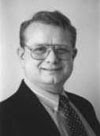

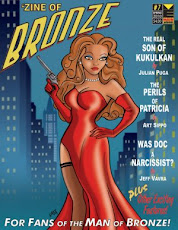
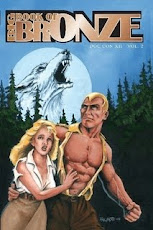



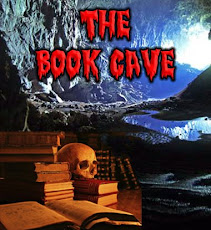


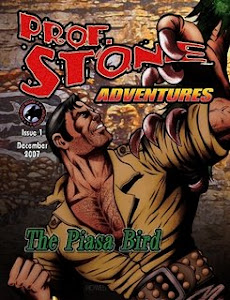


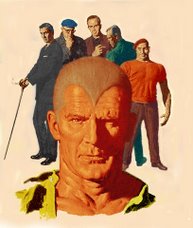

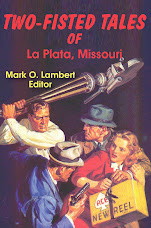
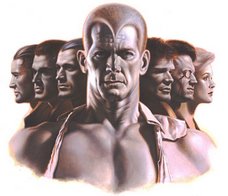


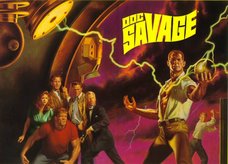





No comments:
Post a Comment